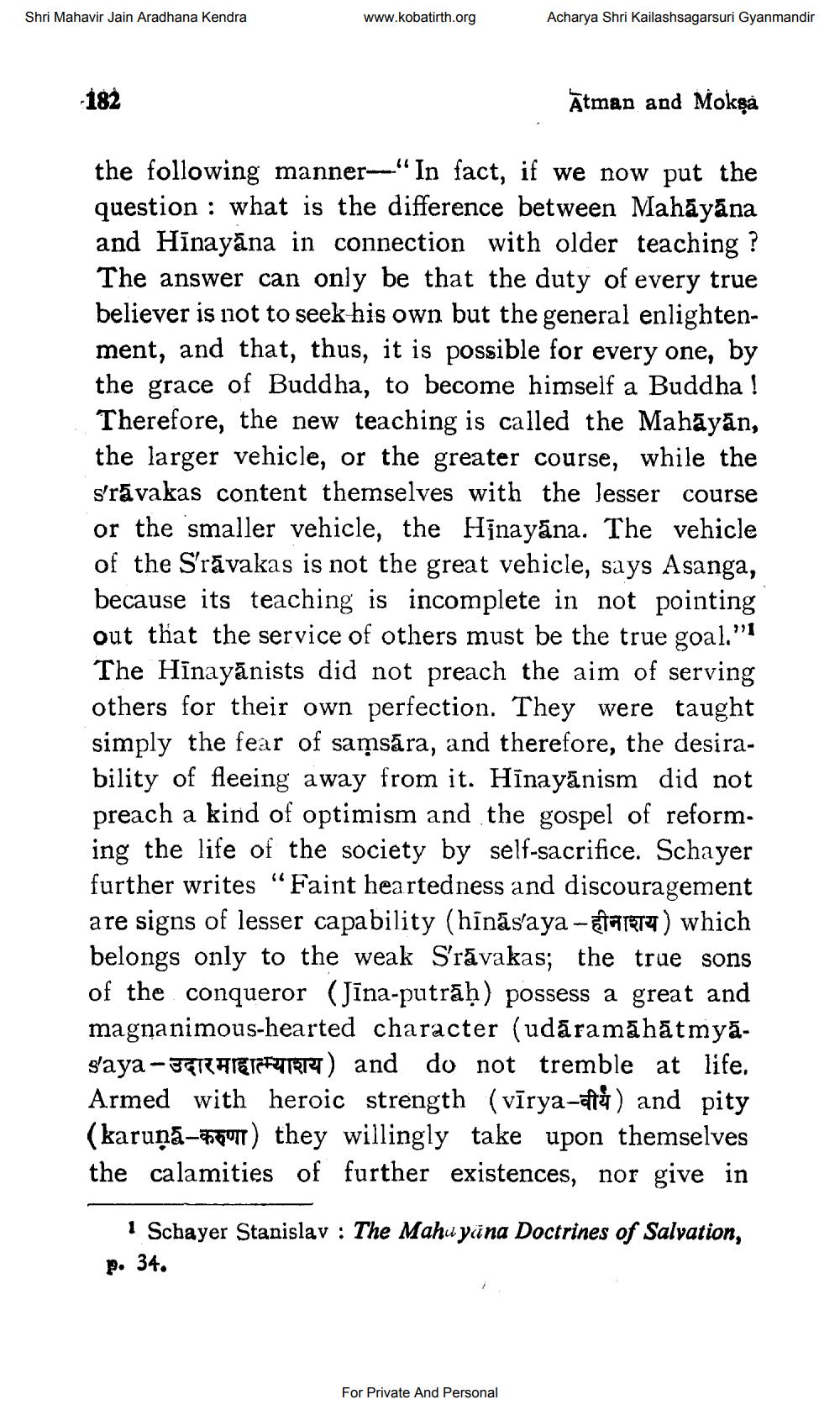________________
Shri Mahavir Jain Aradhana Kendra
www.kobatirth.org
Acharya Shri Kailashsagarsuri Gyanmandir
182
Atman and Mokså
the following manner-"In fact, if we now put the question : what is the difference between Mahāyāna and Hīnayāna in connection with older teaching ? The answer can only be that the duty of every true believer is not to seek his own but the general enlightenment, and that, thus, it is possible for every one, by the grace of Buddha, to become himself a Buddha ! Therefore, the new teaching is called the Mahāyān, the larger vehicle, or the greater course, while the s'rāvakas content themselves with the lesser course or the smaller vehicle, the Hinayāna. The vehicle of the S'rāvakas is not the great vehicle, says Asanga, because its teaching is incomplete in not pointing out that the service of others must be the true goal."'1 The Hīnayānists did not preach the aim of serving others for their own perfection. They were taught simply the fear of samsāra, and therefore, the desirability of fleeing away from it. Hinayānism did not preach a kind of optimism and the gospel of reform. ing the life of the society by self-sacrifice. Schayer further writes "Faint heartedness and discouragement are signs of lesser capability (hīnāsaya -tarTZ) which belongs only to the weak Srāvakas; the true sons of the conqueror (Jīna-putrāḥ) possess a great and magnanimous-hearted character (udāramāhātmyas'aya-5T HETFIFTT) and do not tremble at life. Armed with heroic strength (vīrya-ai) and pity (karuņā-47m) they willingly take upon themselves the calamities of further existences, nor give in
1 Schayer Stanislav : The Mahu yina Doctrines of Salvation, p. 34.
For Private And Personal




